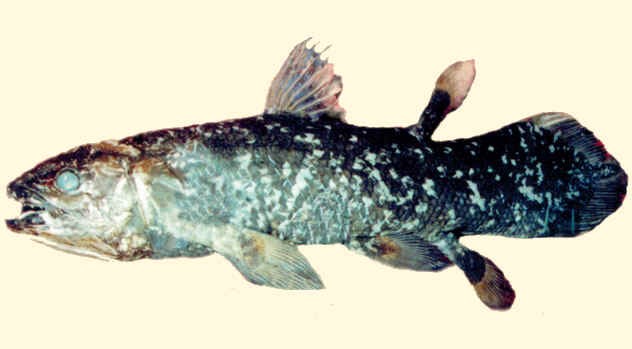 Coelacanth Fish Extinct Animals Species
Coelacanth Fish Extinct Animals SpeciesThe However, it is the distinctive, fleshy paired fins that are characteristic of this particular member of the Sarcopterygii. The term Coelacanth means "Hollow Spines" a reference to the arrangement of hollow spines to be found in the fins.
 Coelacanth Fish Pictures
Coelacanth Fish PicturesAlthough, the two extant (still living today, as opposed to extinct), species are entirely marine, fossils of Coelacanths have been found associated with ancient river systems and lakes indicating that some of this widespread group of fishes lived in freshwater environments as well as marine habitats.
 Coelacanth Fish Photos
Coelacanth Fish PhotosThe fossil record of Coelacanths shows that these Sarcopterygians (lobe-finned or fleshy finned fishes) were a highly successful and diverse group of fishes throughout the Palaeozoic and the Mesozoic. Unfortunately, as a result of over fishing, specimen hunting and the destruction of the Coelacanth's unique habitat at least one of the species known to science is now in danger of extinction.
 Coelacanth Fish Extinct Animals
Coelacanth Fish Extinct AnimalsIn fact, we know that there are at least two species living today. In what became known as the "scientific sensation of the age", and much to the surprise of palaeontologists, it was soon to become clear that representatives of the Coelacanthiformes Order had survived to the present day. However, the discovery of a living Coelacanth specimen in late December 1938 changed our view.
 Coelacanth Fish Wallpapers
Coelacanth Fish WallpapersScientists had thought that this once diverse and widespread group of fishes died out with the dinosaurs. Coelacanth fossils have been found in rock strata dating from the Mid Devonian (approximately 370 million years ago) to sedimentary rock laid down at the end of the Cretaceous (65 million years ago).

